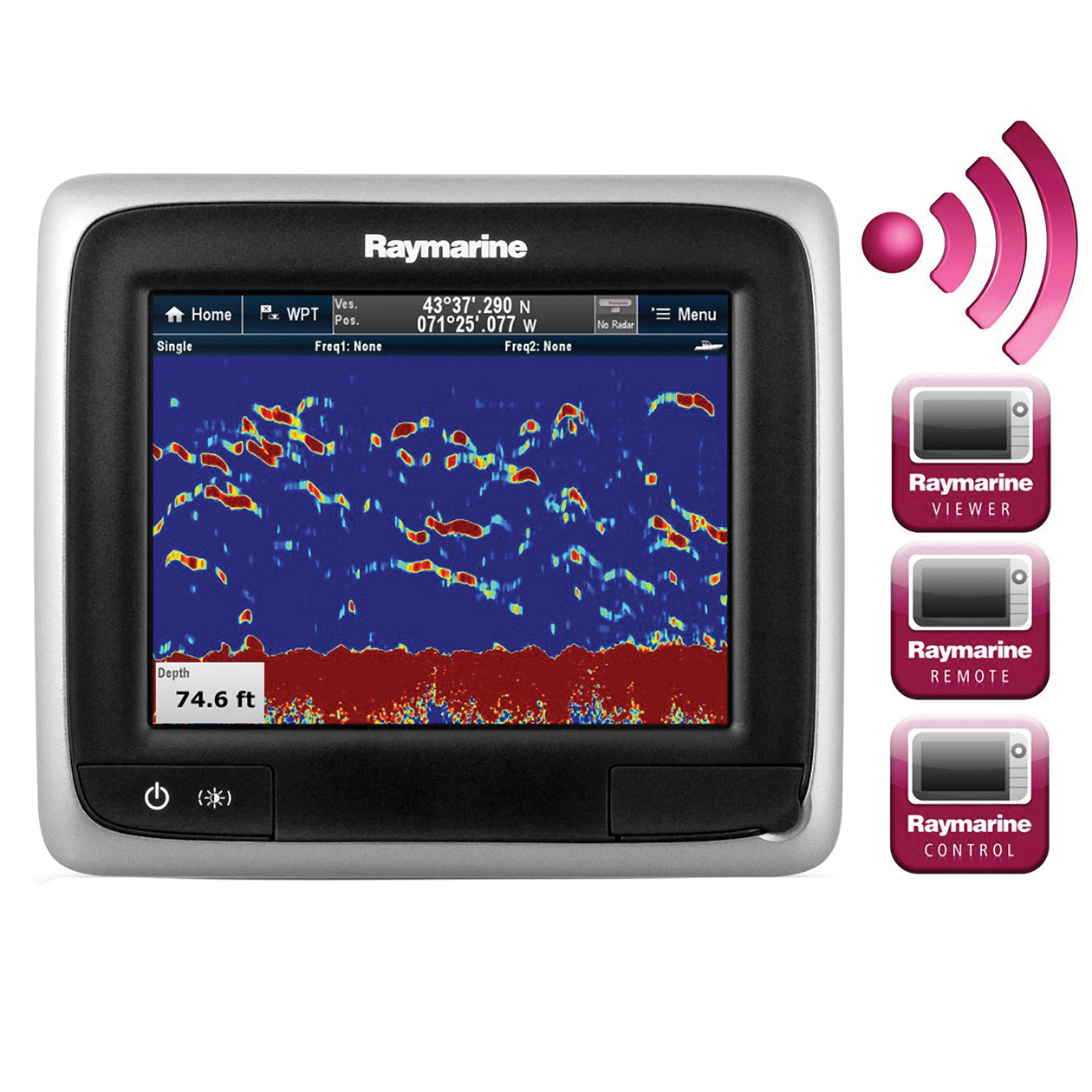Wi-Fi is becoming more popular on boats, whether you have a dedicated cellular-to-Wi-Fi gateway/hub with a SIM card, use your smart device to create a hotspot, or use the Wi-Fi at your marina. Marine electronics manufacturers have started to add built-in Wi-Fi to multifunction displays (MFDs). While Bluetooth has also been available for some time, Wi-Fi has a wider bandwidth and can transfer significantly more data, which is important for charting, radar, and sonar images.
It is not uncommon for us at Pacific Yacht Systems to see two or three Wi-Fi networks on a boat, one for AIS sharing to an AIS transceiver like the Vesper XB-8000, one to view navigation info from a Wi-Fi enabled MFD, and a separate Wi-Fi for general internet use. The user selects the network based on the task at hand.
Why is Wi-Fi so popular? The first advantage is that you can check online for available software updates for your navigation equipment, troubleshoot errors, or view an online manual to learn tips and tricks. However, the real benefit is that you can transform a tablet or smartphone into both a viewer and a two-way MFD controller. The tablet syncs with the MFD and you can use the tablet screen to control the MFD remotely, viewing charts, operating radar, selecting menus and even setting waypoints. In essence, you are creating a second helm for your boat.

Wi-Fi enabled MFDs use a free downloadable app, allowing you to manage your boating experience from anywhere. The Garmin GPSMAP series with Garmin Helm uses ActiveCaptain. Furuno NavNet TZ Touch with the NavNet View app also includes Furuno’s weather station, giving you unlimited access to worldwide weather forecasts around the clock.
The Raymarine eS Series MFDs offer a different array of monitoring systems using the RayControl mobile app. Lowrance and Simrad uses its GoFree technology. The B&G Zeus SolarMAX, designed with sailors in mind, uses the Link app to give you the ability to wirelessly backup and restore waypoints, routes, and tracks directly to your smart device.
Companies like Vesper and Digital Yacht have created products that allow boaters to view AIS information over Wi-Fi to a local connected smart device without a chartplotter. Fusion has a new stereo product called the Apollo that uses Wi-Fi to share music over multiple decks throughout the boat, allowing listeners to choose their own selections or to sync the whole boat; or even a side-tie to listen to the same music between boats.
Connoisseurs agree that music over Wi-Fi sounds much better than music over Bluetooth, since Wi-Fi has better data throughput.
Furuno 1st Watch was the first Wi-Fi 4kW radar that is accessible from a smart device using a free app. This is a great solution for the boater who does not want to run additional radar wiring, add another display, or has limited space for a radome, but would still like all the benefits of having radar on the boat.
Manufacturers are also enabling smart watches to communicate with MFDs. The B&G Osprey Apple Watch App allows wearers to view instrument data directly on their wrist. The Garmin Quantix 5 connects with compatible Garmin MFDs to provide autopilot control, remote waypoint marking, data streaming, and sail racing assistance. You can even control your tunes using the Fusion-Link App.
If you recently purchased a MFD and it did not come with built-in Wi-Fi, don’t dismay. Most manufacturers offer a Wi-Fi module or black box that can be purchased separately like the Raymarine WiFish. A connected boat provides a lot of convenience, but the greatest advantage is still safety. Important data is not “stuck” in one place and is shared and available throughout the boat to the whole crew.


